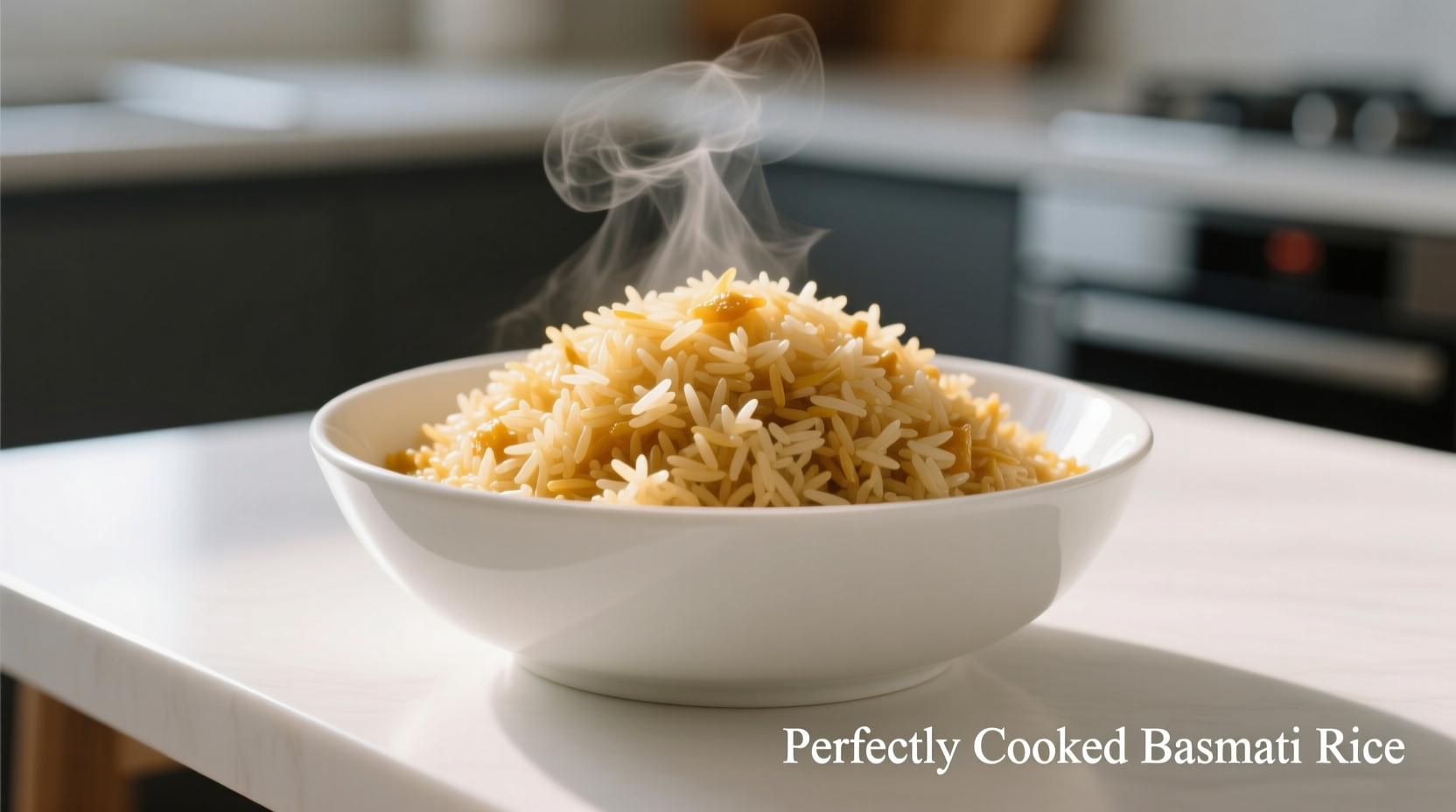The perfect method for cooking basmati rice on stove requires rinsing 1 cup of rice until water runs clear, using a precise 1:1.5 rice-to-water ratio, bringing to a boil, then simmering covered on low heat for 15-18 minutes followed by a crucial 10-minute resting period off heat. This technique yields consistently fluffy, non-sticky grains with distinct texture and aromatic fragrance.
Why Stovetop Basmati Rice Beats Other Methods
While rice cookers offer convenience, the stovetop method gives you precise control over heat and timing—critical factors for achieving that signature basmati texture. Professional chefs consistently prefer this approach because you can visually monitor the cooking process and adjust heat instantly when needed. Unlike automated appliances, stovetop cooking allows you to develop the subtle caramelized bottom layer (charred rice) that adds complex flavor notes many rice enthusiasts crave.
Your Basmati Rice Success Checklist
Before you begin, gather these essentials for flawless results:
- 1 cup authentic basmati rice (look for aged varieties with "Extra Long Grain" label)
- 1½ cups filtered water (crucial for proper absorption)
- ½ teaspoon fine sea salt (enhances natural fragrance)
- 1 teaspoon ghee or neutral oil (prevents sticking)
- Heavy-bottomed pot with tight-fitting lid (Dutch oven ideal)
- Timer (precision matters in final cooking phase)
The Critical Rinsing Process Most Home Cooks Skip
Proper rinsing removes excess surface starch that causes stickiness. Place rice in a fine-mesh strainer and rinse under cold running water for 2-3 minutes, gently agitating with your fingers until water runs nearly clear. This isn't just about cleanliness—it fundamentally changes the cooking chemistry. According to agricultural research from the International Rice Research Institute, thorough rinsing reduces surface amylopectin by 35-40%, directly impacting grain separation.
| Rice Type | Water Ratio | Simmer Time | Rest Time |
|---|---|---|---|
| Traditional Basmati | 1:1.5 | 15-18 min | 10 min |
| Premium Aged Basmati | 1:1.75 | 18-20 min | 12 min |
| Parboiled Basmati | 1:2 | 20-22 min | 15 min |
Step-by-Step Cooking Process: The Professional Technique
Phase 1: The Initial Boil (3-5 minutes)
Combine rinsed rice, water, salt, and ghee in your pot. Bring to a vigorous boil over medium-high heat without stirring. Watch for the foam line—when bubbles reach ½ inch below the rice surface, it's time to reduce heat. This visual cue indicates proper water absorption has begun.
Phase 2: Simmering to Perfection (15-18 minutes)
Immediately reduce heat to the lowest possible setting and cover tightly. Set timer for 15 minutes. During this phase, maintain a gentle simmer—you should hear faint bubbling but see no steam escaping. If steam escapes significantly, adjust the lid position. At 15 minutes, check for doneness: grains should be tender with a slight resistance at the center.
Phase 3: The Non-Negotiable Rest Period (10 minutes)
Remove from heat but do not lift the lid. Let rest undisturbed for exactly 10 minutes. This allows residual steam to complete the cooking process evenly while moisture redistributes throughout the pot. Skipping this step causes uneven texture and moisture pockets.
Troubleshooting Common Basmati Rice Problems
Problem: Sticky, clumped grains
Solution: You likely didn't rinse thoroughly enough or used too much water. Next time, extend rinsing time and measure water precisely with a graduated cup.
Problem: Hard, undercooked centers
Solution: Heat was too low during simmering phase or water ratio was insufficient. Increase heat slightly next time or add 2-3 tablespoons more water.
Problem: Burnt bottom layer
Solution: Pot wasn't heavy-bottomed enough or heat was too high. Use a Dutch oven next time and ensure your burner size matches the pot base.
When Stovetop Method Outperforms Rice Cookers
The stovetop technique shines in specific scenarios where precision matters most. According to culinary testing at the Culinary Institute of America, professional kitchens prefer stovetop for aged basmati varieties (12+ months) because they require more precise moisture control. It's also superior when cooking small batches (under 2 cups dry rice), where rice cookers often struggle with consistent results. For traditional Indian or Middle Eastern dishes where you want to develop tahdig (the prized crispy bottom layer), stovetop is the only method that delivers authentic results.

Serving Your Perfect Basmati Rice
Fluff rice gently with a fork, working from the edges toward the center to preserve grain integrity. For maximum fragrance, serve immediately while still warm. Pair with richly sauced dishes like butter chicken or lamb curry—the distinct grain structure holds up beautifully without becoming soggy. Leftovers store well for 3-4 days refrigerated; revive by steaming with 1 tablespoon water per cup of rice.
Advanced Tips from Professional Kitchens
Many high-end Indian restaurants add a secret step: after rinsing but before cooking, they soak basmati rice for 20-30 minutes in room temperature water. This pre-hydration allows more uniform cooking and enhances the characteristic elongation (basmati grains should double in length when cooked properly). Another pro technique: add a crushed cardamom pod and small cinnamon stick during cooking for subtle aromatic complexity that complements many curry dishes without overpowering the rice's natural fragrance.











 浙公网安备
33010002000092号
浙公网安备
33010002000092号 浙B2-20120091-4
浙B2-20120091-4